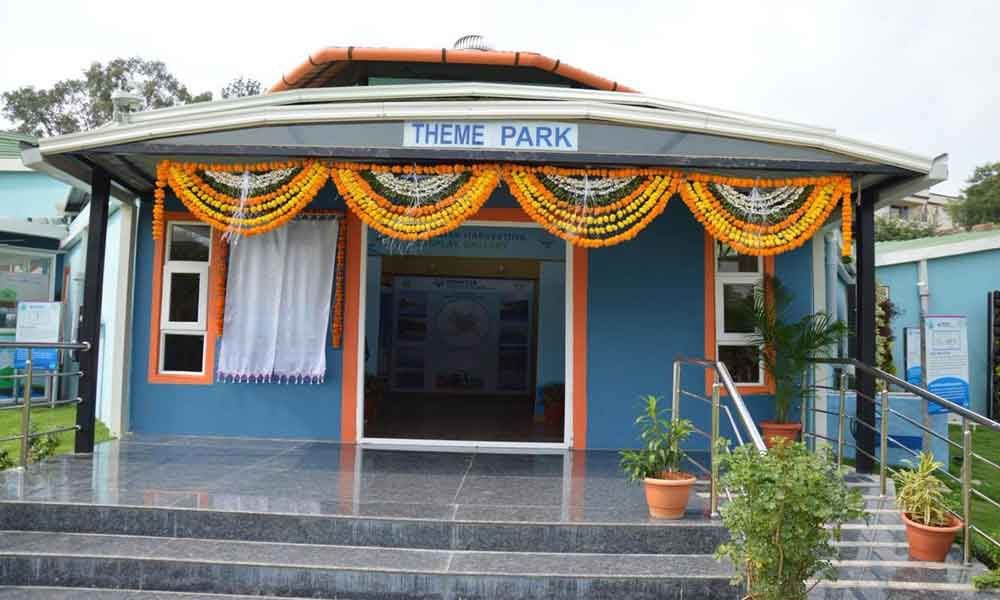Live
- BJP questions Congress-Shiv Sena (UBT) alliance over Aaditya Thackeray's Savarkar-Nehru remark
- Maha Oppn to boycott customary CM tea meet, cites rising farmers' distress, atrocities against Dalits
- Mikheil Kavelashvili is new Georgian President
- He makes things look easy: Smith on 241-run partnership with Head
- Decline in TB cases & deaths in India ‘remarkable’, shows ‘political commitment’, says former WHO Director
- PKL 11: Delhi dedicates win over Haryana to ‘junior express’
- Cyclone kills 14 in French territory Mayotte
- 3rd Test: Head, Smith centuries flatten India on Day 2
- AAP Announces Final Candidate List For 2025 Delhi Assembly Elections, Kejriwal To Contest From New Delhi
- Bangladesh unrest has delayed execution of some vital projects: Tripura CM
Just In
No govt wing in place to help people harvest rain


Hyderabad city, which depends almost on monsoon rains, faces severe water crisis in every summer season.
Hyderabad: Hyderabad city, which depends almost on monsoon rains, faces severe water crisis in every summer season. A report by NITI Aayog in 2018 predicted that as many as 21 cities, including Delhi, Bengaluru, Chennai and Hyderabad in the country would see the total depletion of their groundwater by as early as 2020. There are plenty of rules and regulations regarding implementing of rainwater harvesting, but such rules only exist on paper and are not being implemented strictly.
TS government has already made it mandatory for the construction of rainwater harvesting structures on all premises where the building site area is over 200 square meters to protect and to improve the groundwater for sustainable yields in the bore wells.
As per the instructions from the government, the Greater Hyderabad Municipal Corporation (GHMC) and Hyderabad Metro Water Supply and Sewerage Board (HMWSSB) are doing all the necessary things to create awareness about the rain water harvesting among citizens of the city, but there is no wing or team to monitor the implementation of the rainwater harvesting on regular basis and whether structures are being used properly by the people and how it is helping to improve the groundwater level.
The GHMC officials claim that most people have constructed the structures. "If someone has not constructed due to space problem, then we collect money from them and we construct the rainwater harvesting pits in open places near schools, hospitals and in other corporate places."
HMWSSB has started a unique one-stop destination for education and awareness on rainwater harvesting a year ago, and now they are going to start one more theme park in city by seeing the demand of the rainwater harvesting awareness programme. The park is spread over an area of 3.5 acres and was developed with an aim to create awareness among citizens, especially children, on the need for saving water.
HMWSSB is conducting a lot of awareness programmes in the colonies for technical guidance to construct rainwater harvesting structures themselves on their own premises at their own cost. Long back, the GHMC used to give subsidy to the people for constructing rainwater harvesting pits on their premises, as part of an '100 days action plan' to promote and encourage people to construct the rainwater harvesting structures in their buildings. But now, there is not any subsidy from the GHMC or HMWSSB. With the collaboration of the HMDA and HMWSSB, some 11,000 rainwater harvesting pits were constructed earlier in the GHMC limits.
Speaking to the The Hans India, S Devender Reddy, Chief City Planner at Town Planning Wing, GHMC, said, "We have given permissions to around 51,000 buildings, which include business establishments and residential apartments after the formation of separate state, and before issuing the occupancy certificate to the buildings, our officials go and check whether they have constructed rainwater harvesting structure on their building premises. Only then, we give the occupancy certificate to them".
About 80 to 85% of the buildings are below 200 sq meters and as per rules, there is no need to construct rainwater harvesting structure, and there are hardly 10,000 buildings that are over 200 square meters and rainwater harvesting is mandatory in them, he said. "Once we give the permission, the building owner needs to take care of the rainwater harvesting structure," he added.
The GHMC officials said that there is no wing or team to check if the rainwater harvesting structures are in working condition or not. The officials say that the Water Board staffs go to every building to check the water meters, so they can check if rainwater harvesting structures are working or not. They can impose penalty on them to implement the rainwater harvesting structure strictly, said the GHMC officials.
If the authorities concerned fail to check regularly to ensure the on-ground implementation, rules and regulations for rainwater harvesting are obviously toothless, according to experts.

© 2024 Hyderabad Media House Limited/The Hans India. All rights reserved. Powered by hocalwire.com






